
December 2012
Welcome to the Year in Review Issue of Net Results EXPRESS
Net Results EXPRESS (NRx) is an award-winning, monthly e-newsletter highlighting medical and scientific breakthroughs, major grants and honours awarded, and other research-related events at UHN. In this special issue, you can read about selected research accomplishments and milestones of the past year of our five research institutes, the Ontario Cancer Institute (OCI), the Toronto General Research Institute (TGRI), the Toronto Western Research Institute (TWRI), the Toronto Rehabilitation Institute (TRI) and the Techna Institute for the Advancement of Technology for Health (Techna). We hope you will find this newsletter informative and helpful and we wish you a festive holiday season. If you have feedback or questions, please contact www@uhnresearch.ca. Christopher J. Paige, PhD, FCAHS  |
January
Ovarian Cancer: Drug Delays Disease Progression
Hormone Therapy: Bone Density Monitoring in Prostate Cancer Patients Androgen deprivation therapy (ADT) is often prescribed for patients with prostate cancer. However, one of the side effects of ADT is an increased risk of bone fractures that occurs as a result of decreased bone density. Low bone density can be easily measured and monitored using bone mineral tests (BMT). TGRI and TRI's Dr. Shabbir Alibhai found that although the rate at which physicians ordered BMTs increased between 1998 and 2008, it still remained low, suggesting that there should be more education on the use of BMTs when monitoring and treating patients on ADT. [Abstract] |
February
Structural Biology: Insights on the Mechanics of Calcium Release Calcium release is critical for biological processes and is regulated by specialized channels that act as calcium ‘gates’ or receptors. It is unclear exactly how these gates function, however, a study by OCI's Dr. Mitsuhiko Ikura which compared the structures of two different types of calcium receptors found that they have comparable structures that orient in a similar manner to allow calcium release. These findings increase our understanding of how calcium release is controlled at the cellular level and will be useful in determining how calcium regulates biological responses. [Abstract] Development: Imprinting in the Mouse Genome There are two copies of each chromosome in the genome, one from each parent. For a number of genes, one parental copy is shut off by a phenomenon known as ‘imprinting’. Imprinting errors can lead to developmental and chronic diseases. TWRI’s Drs. Cathy Barr and James Eubanks carried out a systematic survey of the mouse genome, and identified 23 new—and unknown—imprinted regions. They also found a pattern in the genetic code that predisposes genes to imprinting, which may help guide the development of treatments that correct imprinting errors involved in disease. [Abstract] Neurology: Controlling the Growth of Neurons
|
March
Stroke: Development of a New Neuroprotective Drug During a stroke, regions of the brain are deprived of blood and oxygen, leading to neurological impairment or death. TWRI’s Dr. Michael Tymianski has demonstrated the neuroprotective effects of a drug, a postsynaptic density (PSD95) inhibitor, which prevents the neurotoxic reactions that occur in tissue deprived of oxygen. The treatment reduced the neurological damage associated with stroke even after the time when conventional therapies no longer have an effect. [Abstract] |
April
Spinal Cord Injury: Reducing Inflammation with a Smart Material
|
May
Diabetes: Regulation of Glucose by the Intestine
Hypertension: Efficacy of Home Blood Pressure Telemonitoring Techna’s Drs. Joseph Cafazzo, Peter Rossos and Anthony Easty reported on the effectiveness of a home telemonitoring system that helps patients monitor their blood pressure and sends them messages that alert them if it is too high. The home telemonitoring system was found to be effective at reducing patients’ blood pressure without the use of medications or visits to physicians. [Abstract] |
June
Patient Care: Model Predicts Risk of Mortality After Heart Failure
Pancreatitis: How Alcohol Damages the Pancreas Chronic alcohol abuse causes a number of negative health effects, including pancreatitis—an inflammation of the pancreas. TWRI’s Dr. Herbert Gaisano explains, “It’s not alcohol itself that is toxic, but rather its metabolites, the byproducts of its breakdown by the body.” His research team exposed pancreatic cells to different alcohol metabolites and found that the metabolites caused a decreased ability to secrete digestive enzymes critical for the breakdown of food. [Abstract] |
July
Leukemia: An Experimental Model for AML Provides New Insights Mutations in the gene for isocitrate dehydrogenase 1 and 2 (IDH1/2) are frequent in acute myeloid leukemia (AML). OCI’s Dr. Tak Mak and colleagues recently investigated the most common IDH1 mutation in an experimental model, showing that it caused enlarged spleens and decreased blood-producing cells in bone marrow, characteristics of AML. The mutation also affected the epigenome—a non-genetic mechanism that controls gene expression without altering the genetic sequence—shedding light on the mechanism linking the mutation to the disease. [Abstract] |
August
Medical Care: Effects of Social Pressure on Surgical Performance
|
September
Osteoporosis: Inaccurate Assessment of Fracture Risk
|
October
Cancer: A Single DNA Nucleotide Difference Regulates Breast Cancer Cell Growth
Heart Disease: Effect of Depression on Coronary Heart Disease
|
November
Heart Disease: Improving Outcomes with Surgery
Cancer: Palliative Care Referral Practices in Oncology Specialized palliative care (SPC) services can help lessen physical and psychosocial symptoms in patients with advanced cancers through a holistic approach. OCI’s Dr. Camilla Zimmermann surveyed oncologists across Canada regarding their SPC referral practices. Oncologists with access to more comprehensive services or to services that accepted patients still receiving chemotherapy tended to refer patients to SPC earlier. One third would refer to SPC earlier if it was renamed ‘supportive care’, indicating that there may be biases associated with the term ‘palliative care’. [Abstract] |
 |
Dr. Kevin Kain Awarded International Funding
|
UHN Researchers Awarded with FedDev Ontario Funding
In June, the Government of Canada, through the Federal Economic Development Agency for Southern Ontario (FedDev Ontario), announced an investment of nearly $11M towards accelerating the commercialization of neurotechnologies, in partnership with the Ontario Brain Institute, universities and private sector companies. UHN’s Drs. Geoff Fernie, Andres Lozano and Kieran Murphy will lead three of the 14 funded projects focused on the prevention, early diagnosis and treatment of brain disease. |
UHN Researchers Capture New Funding from Canadian Cancer Society
OCI’s Dr. Senthil Muthuswamy and TGRI’s Dr. Andrea McCart were both awarded with Innovation Grants from the Canadian Cancer Society. These grants support unconventional concepts, approaches or methodologies to address problems in cancer research. This funding will enable Dr. Muthuswamy to use a three-dimensional biological model he created to unravel the mystery of how pancreatic cancer develops, and will support Dr. McCart’s research into viruses engineered to target cancer cells. |
OCI Researcher Awarded a Canada Research Chair
|
Dr. Fish Receives Early Researcher Award
|
TRI Start-up Wins Business Venture Award
Simple Systems Inc.—founded by TRI’s Dr. Milos Popovic and members of the Neural Engineering and Therapeutics Team—won the 2012 TiEQuest Business Venture Competition. The company is in the process of commercializing RECLAIM, a rehabilitation therapy that helps patients paralyzed by stroke, spinal cord injury or traumatic brain injury restore voluntary movements using electrical stimulation. Simple Systems was also awarded the TiEQuest 2012 Best Intellectual Property Award. |
UHN Patient Diagnostic Simulation Software a Success
This year UHN’s Perioperative Interactive Education (PIE) team in the Department of Anesthesia and Pain Management at the Toronto General Hospital distributed the Virtual Interactive Case (VIC) software designed by TGRI Scientific Associate Dr. Gordon Tait and Tabby Lulham, a member of the PIE team. VIC software helps health providers gain clinical experience by allowing them to develop and practice their diagnostic skills. The software is now being used by the University of Toronto’s Faculty of Medicine, Toronto General Hospital, Mount Sinai Hospital, St. Michael’s Hospital, Hypertension Canada, George Brown College School of Nursing, Sunnybrook Health Sciences Centre and the Centre for Addiction and Mental Health. It was also awarded first prize in the Canadian Health Care Education Commons Virtual Patient Challenge. |
Final Construction Beam Hoisted for Krembil Discovery Tower
The final structural beam of the Krembil Discovery Tower was hoisted to the top of the building on August 22nd. The Tower will be a state-of-the-art facility to house research teams exploring new treatments across a spectrum of diseases, which include stroke, brain cancer, depression, spinal cord injuries, Parkinson’s disease, epilepsy, Alzheimer’s disease, arthritis, vision research and a range of neurodegenerative and neuromuscular conditions. The contributions of philanthropists Robert and Linda Krembil, the Canada Foundation for Innovation, the Toronto General & Western Hospital Foundation and generous donors have helped create this important research endeavour. |
2012 Annual Research Report
To read more about research over the past year, UHN’s 2012 Research Report is available. This 52-page report features top UHN research from 2012, including top research events, prestigious awards, UHN’s Foundations, as well as feature articles on the Techna Institute for the Advancement of Technology for Health, TRI’s cutting edge iDAPT facility and marketplace innovation at UHN. |

A selection of honours conferred this past year
 Dr. Mary Gospodarowicz was elected President of the Union for International Cancer Control at an international conference held in Montreal. Not only is Dr. Gospodarowicz the first Canadian to be given the prestigious position, she is the first woman to hold the post.
Dr. Mary Gospodarowicz was elected President of the Union for International Cancer Control at an international conference held in Montreal. Not only is Dr. Gospodarowicz the first Canadian to be given the prestigious position, she is the first woman to hold the post.
Dr. Benjamin Neel was elected to the American Association for Cancer Research (AACR) Board of Directors. Dr. Neel also served as the Chairperson of the 2012 AACR Annual Meeting which brings together scientists from all areas of cancer research.
 Prostate Cancer Canada honoured Dr. Robert Bristow with the John Ferguson Memorial Award for Prostate Cancer. The award is given to individuals whose “outstanding impact in the fight against pancreatic cancer is an inspiration to others".
Prostate Cancer Canada honoured Dr. Robert Bristow with the John Ferguson Memorial Award for Prostate Cancer. The award is given to individuals whose “outstanding impact in the fight against pancreatic cancer is an inspiration to others".Dr. Fei-Fei Liu was named the Health Sciences Honouree for the 2012 Israel Cancer Research Fund’s Women of Action Award in acknowledgment of her outstanding achievements in the field of cancer research.
 Dr. Gary Rodin received the Canadian Association of Psychosocial Oncology Life Time Achievement Award in tribute to his distinguished career in the field of psychosocial oncology which has focused on studying the psychosocial challenges that patients and their families endure when they are faced with advanced or terminal cancer.
Dr. Gary Rodin received the Canadian Association of Psychosocial Oncology Life Time Achievement Award in tribute to his distinguished career in the field of psychosocial oncology which has focused on studying the psychosocial challenges that patients and their families endure when they are faced with advanced or terminal cancer.Drs. Frances Shepherd and Michael Baker were awarded the Queen Elizabeth II Diamond Jubilee Medal, created to celebrate The Queen’s 60 year reign and given to Canadians in honour of their contributions to society.
 Dr. Alex Vitkin was elected as a Fellow of the Optical Society of America in recognition of his contributions to the field of biophotonics and biomedical optics.
Dr. Alex Vitkin was elected as a Fellow of the Optical Society of America in recognition of his contributions to the field of biophotonics and biomedical optics.
 Dr. Daniel Winer received the Benjamin Castleman Award from the Massachusetts General Hospital and the United States and Canadian Academy of Pathology.
Dr. Daniel Winer received the Benjamin Castleman Award from the Massachusetts General Hospital and the United States and Canadian Academy of Pathology.Dr. Brain Hodges was recognized by the Canadian Association for Medical Education with the 2012 Ian Hart Award for Distinguished Contribution to Medical Education.
 Dr. Eleanor Fish was awarded the Canadian Society for Immunology 2012 Investigator Award.
Dr. Eleanor Fish was awarded the Canadian Society for Immunology 2012 Investigator Award.Drs. I George Fantus and Gary Lewis and UHN’s Dr. Eleftherios Diamandis are among 53 new Fellows inducted into the Canadian Academy of Health Sciences.
Dr. Angela Cheung received the 2012 Dr. David Sackett Senior Investigator Award from the Canadian Society of Internal Medicine for research excellence by a general internist.
Drs. Geoff Fernie, Catriona Steele and Dina Brooks were awarded the Queen Elizabeth II Diamond Jubilee Medal.
Dr. Fernie was recognized for his work in developing solutions for problems commonly encountered by people with disabilities
Dr. Steele was awarded this medal for her contributions to gerontology through her research into the causes and treatments of swallowing disorders.
Dr. Brooks was honoured for her research into new methods of rehabilitation for patients with chronic lung disease.
 Dr. Charles Tator received the 2012 Council Award from the College of Physicians and Surgeons of Ontario in recognition of his achievements in neurosurgery research, education, teaching and advocacy.
Dr. Charles Tator received the 2012 Council Award from the College of Physicians and Surgeons of Ontario in recognition of his achievements in neurosurgery research, education, teaching and advocacy.Drs. Tator and Michael Fehlings were awarded the Reeve-Irvine Research Medal for Spinal Cord Injury Research from the Reeve-Irvine Research Center at the University of California for their contributions to spinal cord repair.
 Dr. Rosemary Martino was elected a Fellow of the American Speech-Language-Hearing Association (ASHA), one of the highest forms of recognition given by ASHA.
Dr. Rosemary Martino was elected a Fellow of the American Speech-Language-Hearing Association (ASHA), one of the highest forms of recognition given by ASHA.Dr. Murray Urowitz was awarded a Queen Elizabeth II Diamond Jubilee Medal in recognition of his longstanding contributions to lupus research and his work in the field of rheumatology.
 In 2012 Dr. Andres Lozano received a number of awards and accolades. He received the Pioneer in Medicine Award from the Society of Brain Mapping and Therapeutics and the 2012 Olivecrona Medal from the Karolinska Institutet, both awarded in recognition of his research in deep brain stimulation. He was also named one of 53 new Fellows inducted into the Canadian Academy of Health Sciences for 2012.
In 2012 Dr. Andres Lozano received a number of awards and accolades. He received the Pioneer in Medicine Award from the Society of Brain Mapping and Therapeutics and the 2012 Olivecrona Medal from the Karolinska Institutet, both awarded in recognition of his research in deep brain stimulation. He was also named one of 53 new Fellows inducted into the Canadian Academy of Health Sciences for 2012. Dr. Aaron Schimmer was presented with UHN’s 2012 Inventor of the Year Award which is given annually to an exemplary researcher whose innovations have made a major impact to the field of biomedical research. Dr. Schimmer received the award for his research in drug development in which he studies known drugs to determine if they may be efficacious in treating diseases other than those they are normally used for.
Dr. Aaron Schimmer was presented with UHN’s 2012 Inventor of the Year Award which is given annually to an exemplary researcher whose innovations have made a major impact to the field of biomedical research. Dr. Schimmer received the award for his research in drug development in which he studies known drugs to determine if they may be efficacious in treating diseases other than those they are normally used for.







Feedback
Net Results EXPRESS is brought to you by UHN Research Communications. We hope you have enjoyed receiving this message. If you have any feedback, please email www@uhnresearch.ca.
To access archived issues of Net Results EXPRESS, visit uhnresearch.ca/news/netresultsexpress
Some images adapted from the image archives of stock.xchng.ca and wikimedia.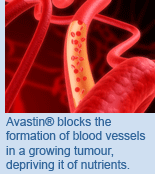 An international ovarian cancer clinical trial, co-led by OCI’s Dr.
An international ovarian cancer clinical trial, co-led by OCI’s Dr. 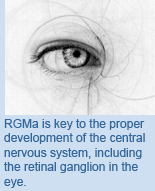 A small number of factors in careful balance control the formation of connections between cells in the nervous system. TWRI’s Dr.
A small number of factors in careful balance control the formation of connections between cells in the nervous system. TWRI’s Dr.  Following a spinal cord injury, some patients will experience a condition called post-traumatic syringomyelia (PTS), severe inflammation in the tissue surrounding the spinal cord associated with chronic pain or paralysis. TWRI’s Dr.
Following a spinal cord injury, some patients will experience a condition called post-traumatic syringomyelia (PTS), severe inflammation in the tissue surrounding the spinal cord associated with chronic pain or paralysis. TWRI’s Dr. 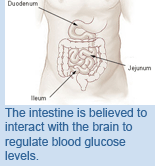 Gastrointestinal bypass surgery decreases the risk of diabetes in obese patients by reducing blood glucose levels; however, the mechanism by which it does so is unknown. A study by TGRI’s Dr.
Gastrointestinal bypass surgery decreases the risk of diabetes in obese patients by reducing blood glucose levels; however, the mechanism by which it does so is unknown. A study by TGRI’s Dr. 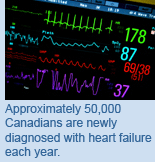 TGRI’s Dr. Douglas Lee and his team developed and validated a model to predict acute heart failure mortality, known as the Emergency Care Heart Failure Mortality Risk Grade system (EHMRG). The system was developed to predict the risk of mortality by using variables that are routinely collected in the clinic including blood pressure, hemoglobin concentration and transportation by emergency medical services. EHMRG will be a useful tool for physicians when making the decision on whether or not to hospitalize or discharge coronary heart patients. [
TGRI’s Dr. Douglas Lee and his team developed and validated a model to predict acute heart failure mortality, known as the Emergency Care Heart Failure Mortality Risk Grade system (EHMRG). The system was developed to predict the risk of mortality by using variables that are routinely collected in the clinic including blood pressure, hemoglobin concentration and transportation by emergency medical services. EHMRG will be a useful tool for physicians when making the decision on whether or not to hospitalize or discharge coronary heart patients. [ A study led by TGRI’s Dr. Carol-anne Moulton found that appropriate surgical behaviour requires surgeons to be decisive and confident and is strongly influenced by surgical culture. This leads to performance that may impact surgical judgment and decision making. Observations from the study suggest that by identifying social pressures that influence their surgical identity, surgeons can better manage their responses to social pressure which could help prevent surgical errors. [
A study led by TGRI’s Dr. Carol-anne Moulton found that appropriate surgical behaviour requires surgeons to be decisive and confident and is strongly influenced by surgical culture. This leads to performance that may impact surgical judgment and decision making. Observations from the study suggest that by identifying social pressures that influence their surgical identity, surgeons can better manage their responses to social pressure which could help prevent surgical errors. [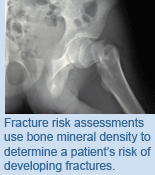 Physicians will use extra care when treating patients that have an increased risk of developing fractures. TRI’s Dr.
Physicians will use extra care when treating patients that have an increased risk of developing fractures. TRI’s Dr. 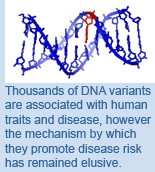 A specific type of variation in DNA—known as a single nucleotide polymorphism (SNP)—can alter gene expression and potentially increase the risk of developing breast cancer. OCI’s Dr.
A specific type of variation in DNA—known as a single nucleotide polymorphism (SNP)—can alter gene expression and potentially increase the risk of developing breast cancer. OCI’s Dr. 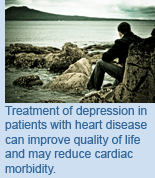 A study by TRI and TGRI’s Dr.
A study by TRI and TGRI’s Dr. 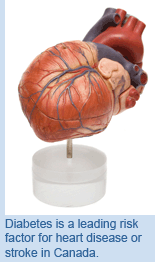 Diabetic and heart disease patients with narrow or blocked arteries often undergo one of two procedures to restore blood flow. These are coronary-artery bypass grafting (CABG), where healthy blood vessels are transplanted to bypass the blocked artery, or percutaneous coronary intervention (PCI), in which a balloon is used to inflate the blocked artery and a tube is placed to keep the artery open. TGRI’s Dr. Michael Farkouh led a clinical trial comparing the two surgeries and found that CABG was more effective at reducing rates of death and heart attacks in patients with diabetes and heart disease albeit with an increased risk of stroke. [
Diabetic and heart disease patients with narrow or blocked arteries often undergo one of two procedures to restore blood flow. These are coronary-artery bypass grafting (CABG), where healthy blood vessels are transplanted to bypass the blocked artery, or percutaneous coronary intervention (PCI), in which a balloon is used to inflate the blocked artery and a tube is placed to keep the artery open. TGRI’s Dr. Michael Farkouh led a clinical trial comparing the two surgeries and found that CABG was more effective at reducing rates of death and heart attacks in patients with diabetes and heart disease albeit with an increased risk of stroke. [ TGRI’s Dr.
TGRI’s Dr.  OCI’s Dr.
OCI’s Dr.  TGRI’s Dr.
TGRI’s Dr.